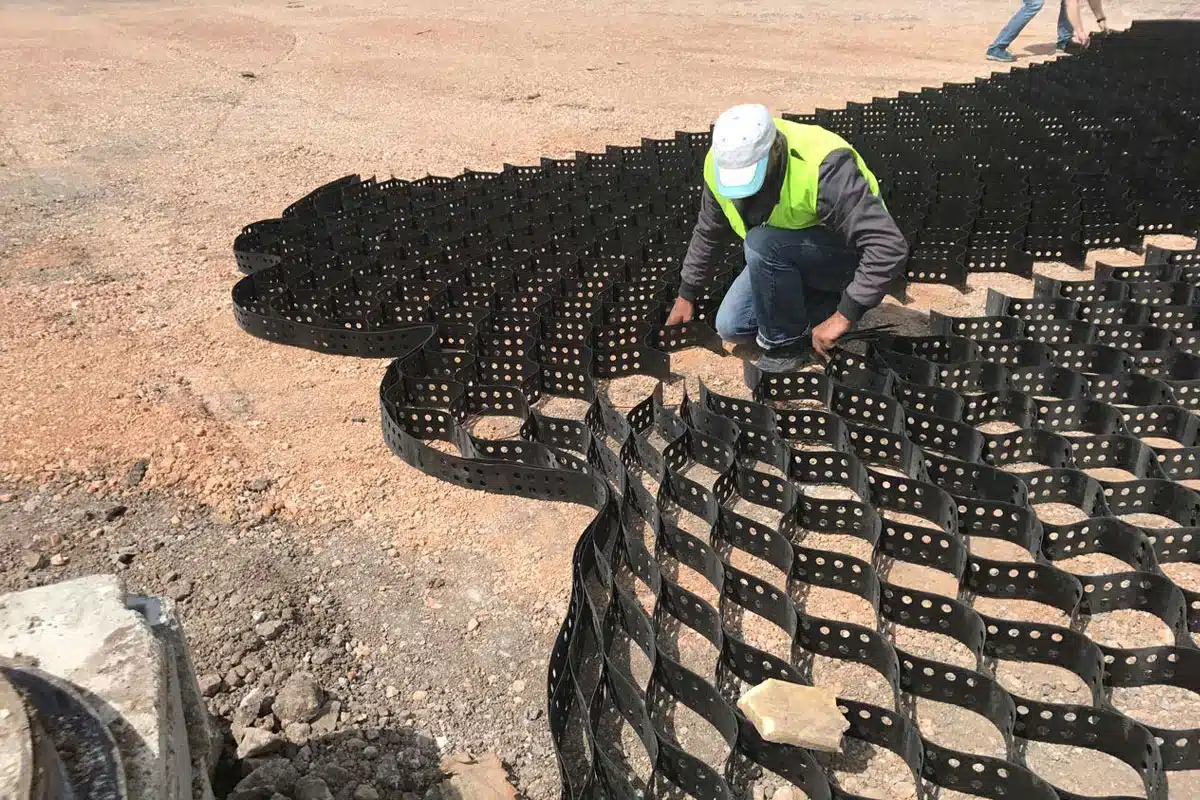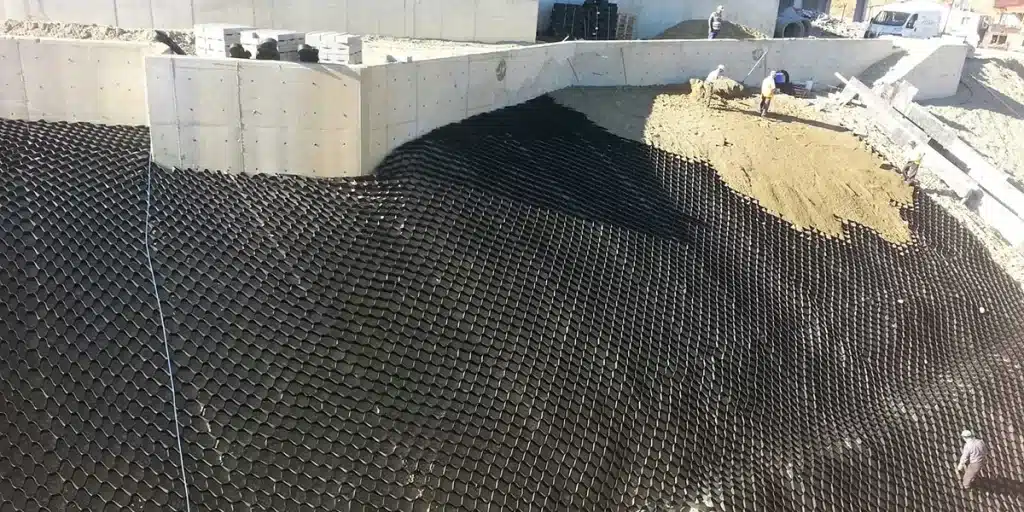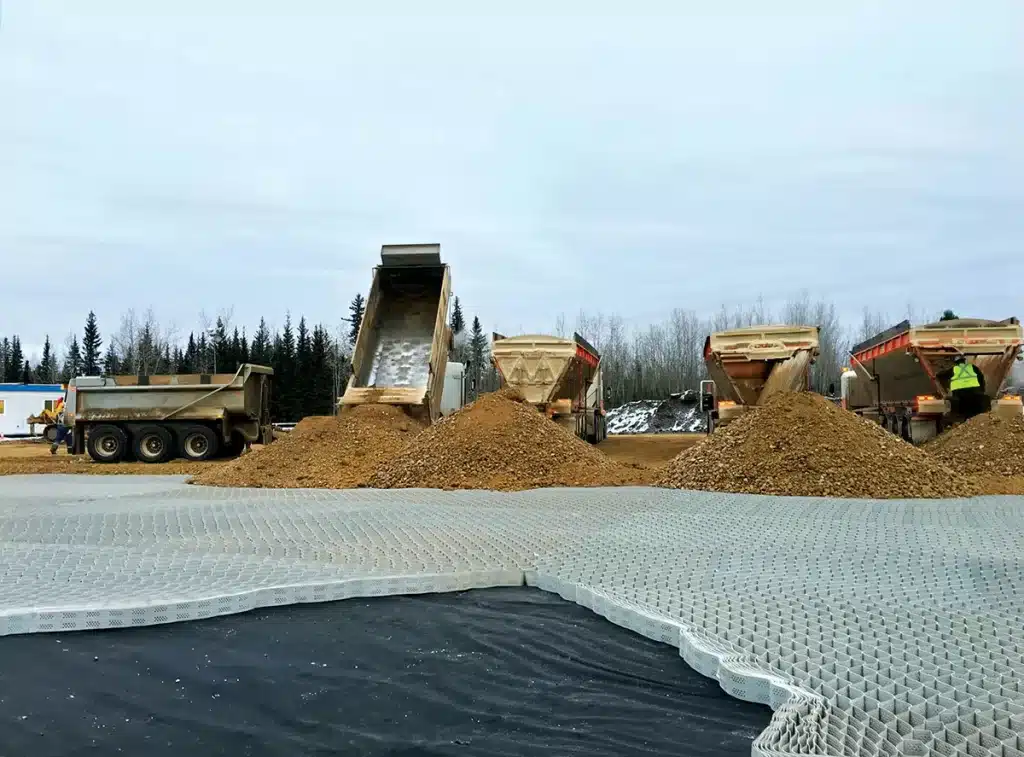+86-159 9860 6917
info@geofantex.com
geofantex@gmail.com
+86-400-8266163-44899
In the quest for more sustainable and eco-friendly building materials, a new contender has emerged that is revolutionizing the construction industry: geocell roofing. This innovative technology not only promises enhanced durability and energy efficiency but also paves the way for greener construction practices. In this article, we delve into the world of geocell roofing, exploring its benefits, applications, and potential to transform the buildings of tomorrow.

What is Geocell Roofing?
Geocell roofing refers to a roofing system that incorporates cellular technology – a three-dimensional honeycomb-like structure made from polymeric alloys or recycled plastics. This design offers superior strength and flexibility, making it an ideal choice for roofing applications. Geocell roofing systems are known for their lightweight, yet incredibly durable characteristics, providing effective insulation and water management capabilities.
How Does Geocell Roofing Contribute to Sustainability?
Geocell roofing contributes to sustainability in several key ways. Firstly, the materials used are often recycled or recyclable, reducing the demand for virgin resources and minimizing waste. Secondly, the unique structure of geocell roofing provides excellent insulation, which can significantly reduce energy consumption for heating and cooling. Additionally, these systems are designed to be long-lasting, reducing the need for frequent replacements and further diminishing the environmental footprint of building projects.

What Are the Advantages of Geocell Roofing Over Traditional Roofing Materials?
The advantages of geocell roofing over traditional materials are manifold. For starters, its lightweight nature reduces structural stress, allowing for more innovative architectural designs. The material’s resilience to extreme weather conditions, including heavy rain, snow, and high winds, ensures a longer lifespan and less maintenance. Moreover, geocell roofing systems are often quicker and easier to install, saving both time and labor costs. Their superior insulation properties also make them more energy-efficient, leading to lower utility bills for property owners.
Can Geocell Roofing Be Customized for Different Architectural Styles?
Absolutely. One of the most appealing aspects of geocell roofing is its versatility. The material can be manufactured in various colors, shapes, and sizes, making it suitable for a wide range of architectural styles, from modern to traditional. Whether it’s a residential home, a commercial building, or an industrial facility, geocell roofing can be tailored to meet specific aesthetic and functional requirements, ensuring that each project is both visually appealing and environmentally responsible.
Geocell roofing represents a significant step forward in the pursuit of sustainable construction practices. Its innovative design and materials offer a multitude of benefits, including enhanced durability, energy efficiency, and environmental friendliness. As the construction industry continues to evolve, geocell roofing stands out as a promising solution for builders and architects looking to reduce their ecological footprint while not compromising on quality or aesthetics. With its adaptability to various architectural styles and its contribution to greener building methods, geocell roofing is poised to become a staple in the future of construction.



Get Free Sample
We’ll respond as soon as possible(within 12 hours)






















